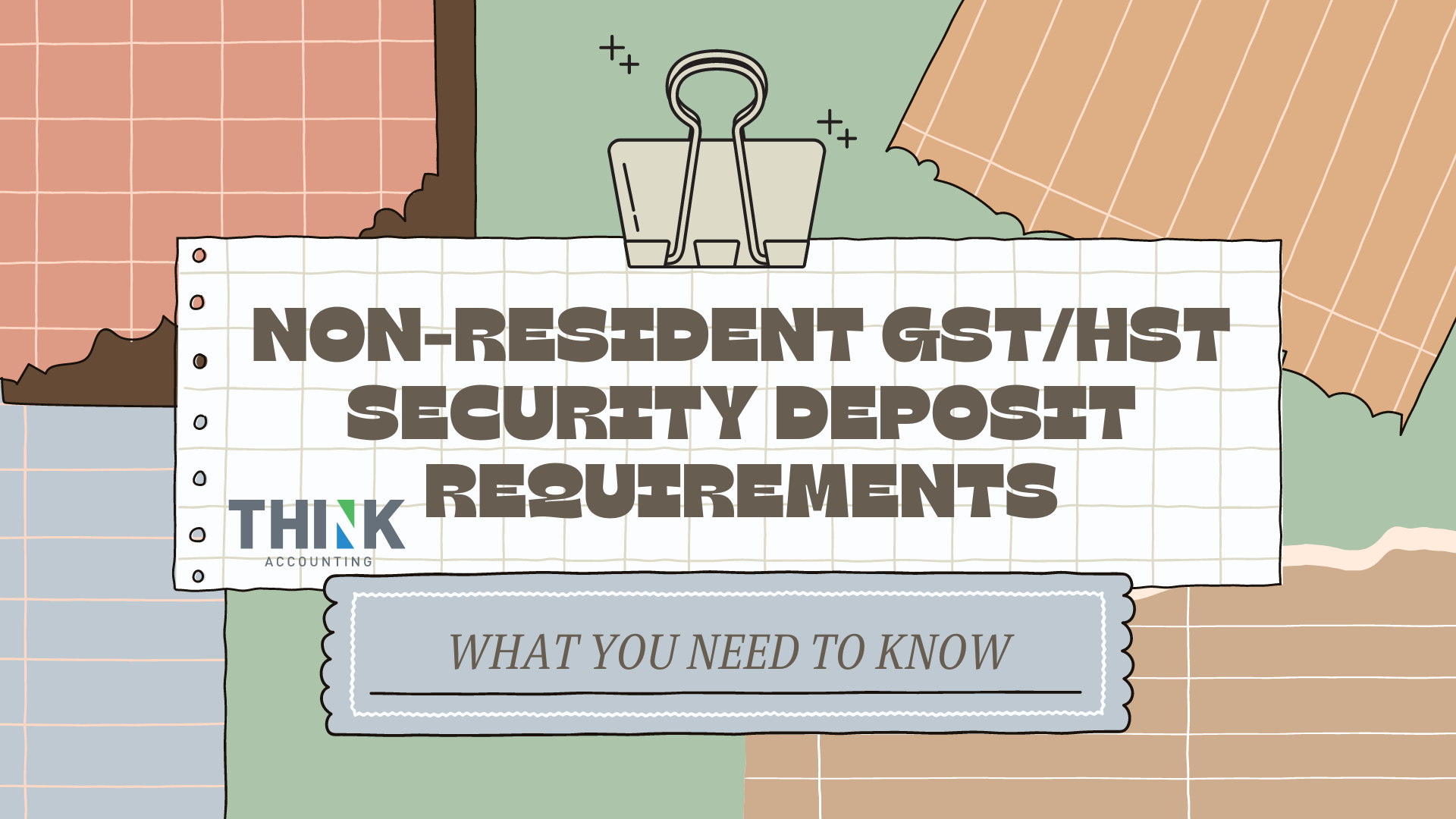As a non-resident business operating in Canada, understanding the Goods and Services Tax/Harmonized Sales Tax (GST/HST) registration process and associated security deposit requirements is crucial. Below we discuss an overview of the Canada Revenue Agency’s (CRA) GST/HST security deposit policy for non-resident businesses registering for a GST/HST account.
GST/HST Security Deposit Requirement
Generally, if you are a non-resident business without a permanent establishment in Canada, or if you make supplies in Canada only through another person’s fixed place of business, you are required by CRA to provide a security deposit when applying for GST/HST registration.
Exceptions to the GST/HST Security Deposit Requirement
There is an important exception to this rule. If you estimate that your annual taxable sales or supplies of property and services in Canada will not exceed CAD 100,000, and your annual net tax will be between CAD 3,000 remittable and CAD 3,000 refundable, you are not required to provide a security deposit.
Calculating the GST/HST Security Deposit
The amount of the GST/HST security deposit by CRA is determined as follows:
1. Initial Registration: 50% of your estimated net tax for the first 12 months after registration.
2. Subsequent Years: 50% of your actual net tax for the previous 12-month period.
It’s important to note that there are minimum and maximum limits to the security deposit:
- Minimum: CAD 5,000
- Maximum: CAD 1 million
Acceptable Forms of GST/HST Security Deposit
The CRA accepts the following forms of security deposit:
- Cash
- Certified Cheque
- Money Order
- Qualifying Bond
Please note that the CRA does not accept non-transferable bonds, such as Canada Savings Bonds.
Important Considerations
1. Cash Equivalents: If you provide cash or cash equivalents (certified cheque or money order), be aware that these funds may be used to pay any outstanding debts to the CRA when the security is released.
2. Canadian Currency: All security deposits must be paid in Canadian dollars.
3. Permanent Establishment: If you establish a permanent presence in Canada after registration, you may request a review of your security deposit requirement.
4. Annual Review: The CRA reviews the security deposit annually and may adjust the amount based on your actual GST/HST remittances or refunds.
Registration Process
To register for a GST/HST account as a non-resident business:
1. Obtain a Business Number (BN) from CRA if you don’t already have one.
2. Use the Non-Resident Business Number and Account Registration Web Form to register for a GST/HST account.
3. Prepare the required security deposit to CRA based on your estimated or actual net tax.
4. Submit the security deposit to the appropriate Tax Centre.
Conclusion
Understanding and complying with the CRA’s GST/HST security deposit requirements is essential for non-resident businesses operating in Canada. By carefully estimating your taxable supplies and net tax, you can determine whether you need to provide a security deposit and, if so, the appropriate amount. This ensures smooth registration and compliance with Canadian tax regulations.
Need further help specific to your situation? Reach out to our tax team here at Think Accounting or contact the CRA directly.
